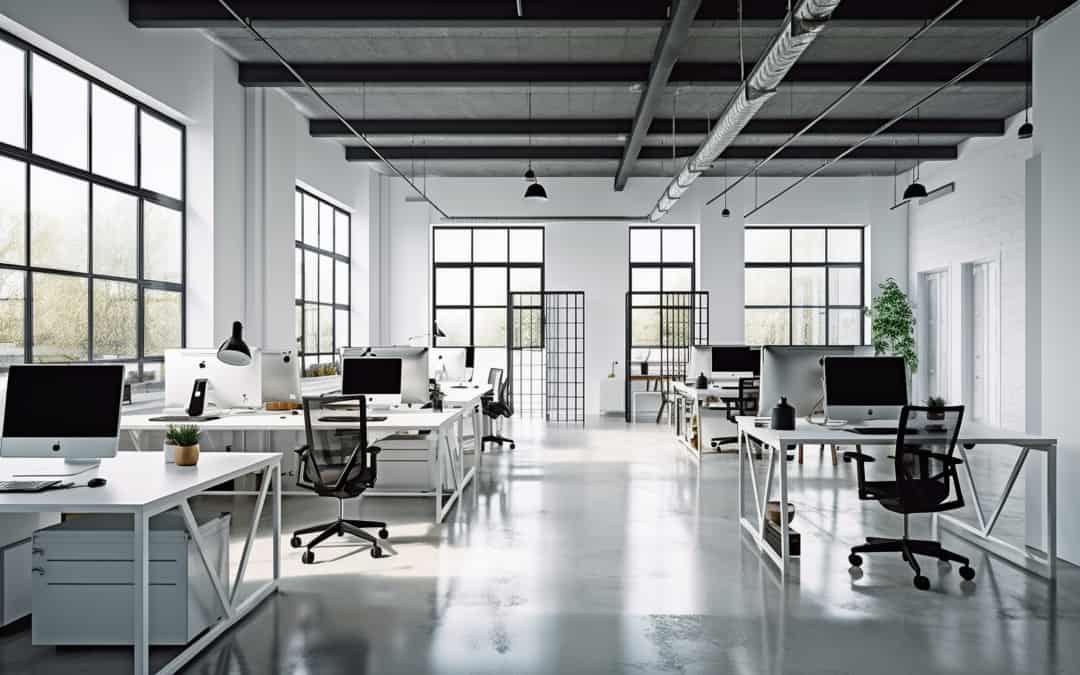How to Downsize an Office Space for the Hybrid Remote Work Model
Many businesses are downsizing their offices as a result of the COVID-19 pandemic changing the way work is done. With many employees working from home or remotely, businesses have realized they don’t need as much physical space as they did before. Many businesses are also utilizing hybrid remote work models where employees work from home part of the time and come into the office for collaborative work and meetings a few days per week. This means that businesses may require less space for employees to work in on a daily basis. Additionally, businesses may be forced to downsize due to economic challenges if the predictions of a coming recession prove to be true.
As a result, some businesses are downsizing their office space, moving to smaller locations, or adopting flexible office space solutions that allow them to use space as needed. What does that mean for office design and furniture? How should business approach the downsizing process? Let’s explore some suggestions for how to approach an office space downsizing and redesign project.
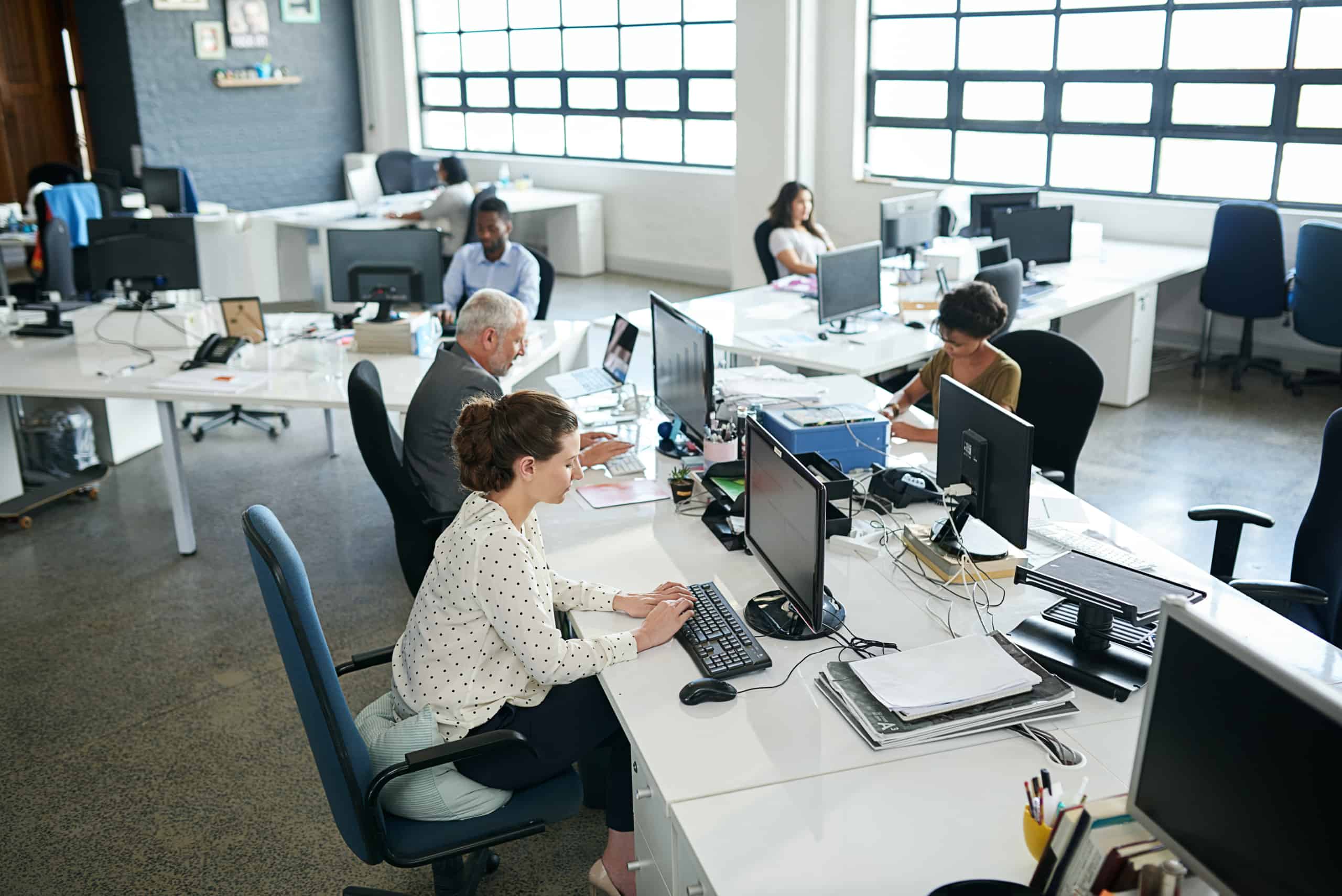
How to Downsize an Office Space
Downsizing an office is a process of reducing the physical footprint of a business by decreasing the amount of office space it occupies. A big consideration is understanding why the downsizing is happening and what the changing needs are for the business. For most businesses, the primary underlying change is moving permanently the hybrid remote model.
Here are some steps a business can take to downsize their office:
- Evaluate the current space: The first step in downsizing is to evaluate the current space and identify areas that are underutilized or could be repurposed. This includes examining office layout, furniture, and storage space to determine what is necessary and what can be eliminated.
- Determine the new office requirements: Once the current space has been evaluated, the business should determine the minimum amount of space needed to accommodate its operations. This will depend on factors such as the number of employees in the office on busiest days, how much private space is needed for concentration, and how much collaborative and common space is needed.
- Identify alternative work arrangements and office design ideas: Downsizing may require alternative work arrangements, such as shared workspaces or “hot desking”. It may also make sense to utilize flexible office space designs and furniture. The business should evaluate which arrangements would work best for its operations and employees.
- Communicate with employees: Downsizing can be a significant change for employees, so it is important to communicate clearly and transparently about the reasons for downsizing and how it might impact the workers. Employees should be informed of any changes to their work arrangements and seek to ensure that individual’s needs are being considered.
- Plan and execute the move: Once the downsizing plan has been developed and communicated, the business should plan and execute the move. This may involve relocating to a new office, consolidating space within the current office, or reconfiguring the existing space. Most likely, office furniture needs to be moved. Be sure to book a furniture moving and installation team far in advance and coordinate with the property managers.
- Monitor and adjust: After downsizing, the business should monitor the new office space to ensure that it is meeting its needs and adjust as necessary. This may include reconfiguring workspaces or making changes to work arrangements.
Downsizing an office can be a complex process, but it can also provide opportunities for cost savings, increased efficiency, and greater flexibility. By carefully evaluating the current space, communicating with employees, and planning and executing the move, businesses can successfully downsize their office while maintaining productivity and employee satisfaction.
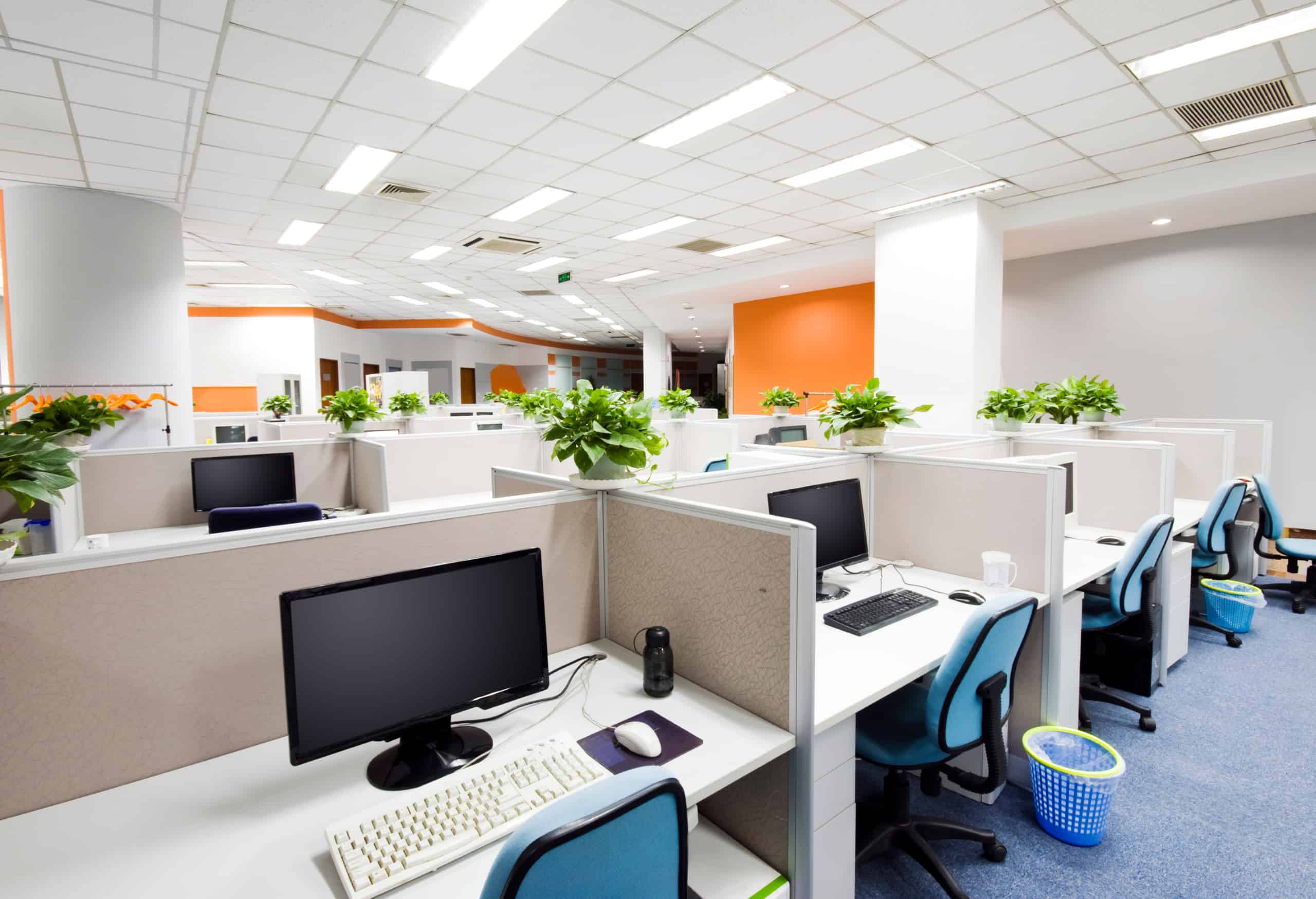
Key Considerations for Downsizing an Office
Flexible Office Space & Furniture
Flexible office space refers to office space that can be adapted to the needs of the business as they change over time. Flexible office space can take many forms
When it comes to furnishing a flexible office space, it is important to choose furniture that is versatile, adaptable, and comfortable. Here are some types of office furniture that are well-suited for flexible office spaces:
- Modular furniture: Things like modular desks can be arranged and rearranged to create different seating arrangements and configurations, making it ideal for flexible office spaces. Modular furniture includes pieces like sectional sofas, stackable chairs, and moveable desks that can be easily rearranged to suit different work activities and group sizes.
- Standing desks: Height-adjustable desks that allow users to alternate between sitting and standing while they work. This type of furniture is ideal for a flexible office space because it can be easily adjusted to accommodate different work preferences and needs.
- Lightweight chairs: they are easy to move around and can be stacked and stored when not in use. This makes them ideal for flexible office spaces where seating needs may change frequently.
- Mobile partitions and storage units: Partitions can be moved around the office as needed and can be used to create visual barriers between different work zones. This can help repurpose an area to allow for collaboration or to add privacy depending on the need.
- Alternative meeting spaces: provides an alternative location for employees to hold meetings, collaborate, or work together in a more casual or creative setting. This tactic can help make meeting spaces also serve other purposes, such as being casual common space when there are no meetings happening.
When choosing office furniture for a flexible office space, it is important to consider the needs of the employees, the type of work being performed, and the overall design and layout of the space. By choosing versatile, adaptable, and comfortable furniture, businesses can create a flexible office space that promotes collaboration, creativity, and productivity.
Hot Desks
Hot desks are flexible office workstations that are used on a first-come, first-served basis. They are typically found in coworking spaces, open-plan offices, and other flexible work environments. When many employees are taking advantage of a hybrid remote schedule, fewer workstations are needed and assigned seats may not be ideal.
With hot desks, there is no assigned seating or designated workspace for an individual. Instead, workers can choose any available desk or workstation to work from for the day. Some hot desks may come equipped with basic amenities such as power outlets, internet access, and chairs, while others may offer more advanced features like lockable storage, ergonomic furniture, or video conferencing equipment. They are beneficial for companies that have a large workforce with flexible work schedules, as they can provide a cost-effective and efficient solution for accommodating changing work patterns.
Hot desks can be a great option for businesses that are downsizing their office space or transitioning to a hybrid work model, as they allow for a more flexible and adaptable work environment. Additionally, hot desks can promote collaboration and networking, as workers from different companies or departments can interact and share ideas while working in a shared space.
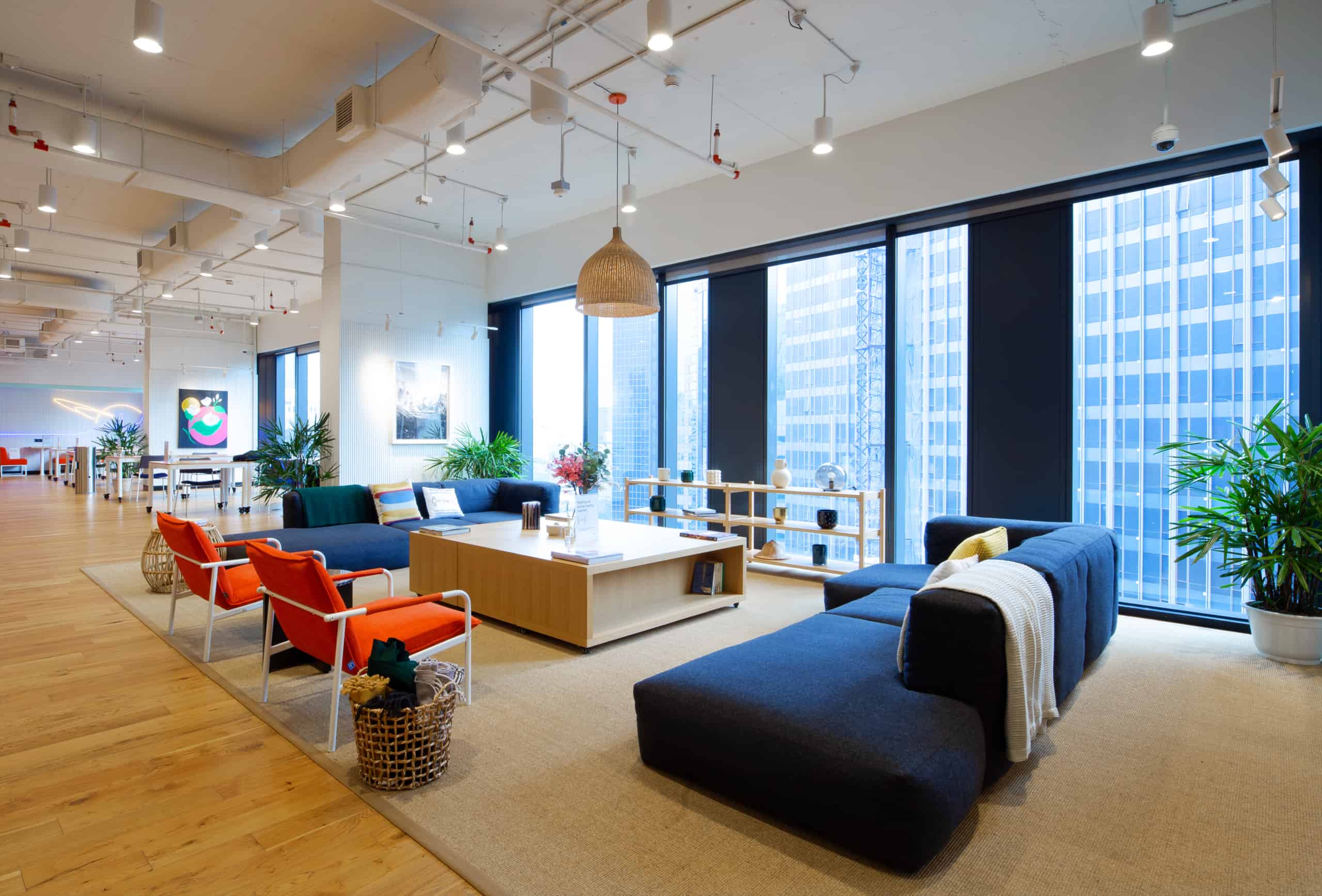
Multi-Use Areas
Multi-use areas in offices are spaces that are designed to serve multiple functions, rather than being dedicated to a single purpose. They are becoming increasingly popular in modern office design as businesses look for ways to make the most of their space and create more flexible, adaptable work environments.
Some examples of multi-use areas in offices include:
- Meeting areas: These are spaces that can be used for both formal and informal meetings, as well as for collaborative work or individual tasks. They may be equipped with furniture that can be easily reconfigured to suit different types of meetings, such as tables that can be arranged in different shapes or movable screens for privacy.
- Breakout areas: These are spaces designed for relaxation, informal meetings, or socializing. They may feature comfortable seating, coffee and tea facilities, or games and entertainment options to encourage workers to take breaks and recharge.
- Quiet zones: These are designated areas where workers can go to focus on individual tasks or take phone calls without disturbing others. They may be equipped with sound-absorbing materials, comfortable seating, or privacy screens to create a distraction-free environment.
By incorporating multi-use areas in offices, businesses can create a more dynamic and versatile work environment that can adapt to the changing needs of their workforce. Multi-use areas can also promote collaboration, creativity, and productivity by providing workers with a variety of spaces to work in that suit their preferences and work style.
Office Furniture Minimalism
Office furniture minimalism refers to a design philosophy that prioritizes simplicity, functionality, and efficiency in office furniture design. It is characterized by clean lines, minimal ornamentation, and a focus on the essentials, such as ergonomic seating, work surfaces, and storage.
The goal of office furniture minimalism is to create a clutter-free, streamlined workspace that promotes productivity and reduces distractions. This is achieved by selecting furniture that is functional, durable, and adaptable to a variety of work styles and tasks.
Some common features of office furniture minimalism include:
- Simple design: Minimalist office furniture often features simple, geometric shapes and clean lines. It may be made from materials such as wood, metal, or plastic, with a focus on function over form.
- Multifunctional furniture: Minimalist office furniture is often designed to serve multiple purposes, such as a desk that doubles as a storage unit, or a chair that can be easily repositioned for different tasks.
- Ergonomic features: Minimalist office furniture often incorporates ergonomic features such as adjustable height, lumbar support, and tilt control, to promote comfort and reduce strain on the body.
Office furniture minimalism can be a great option for businesses that are downsizing their office space or transitioning to a hybrid work model, as it allows for a more efficient and adaptable work environment. Additionally, minimalist office furniture can help to create a cohesive, professional look that reflects the values and culture of the business.
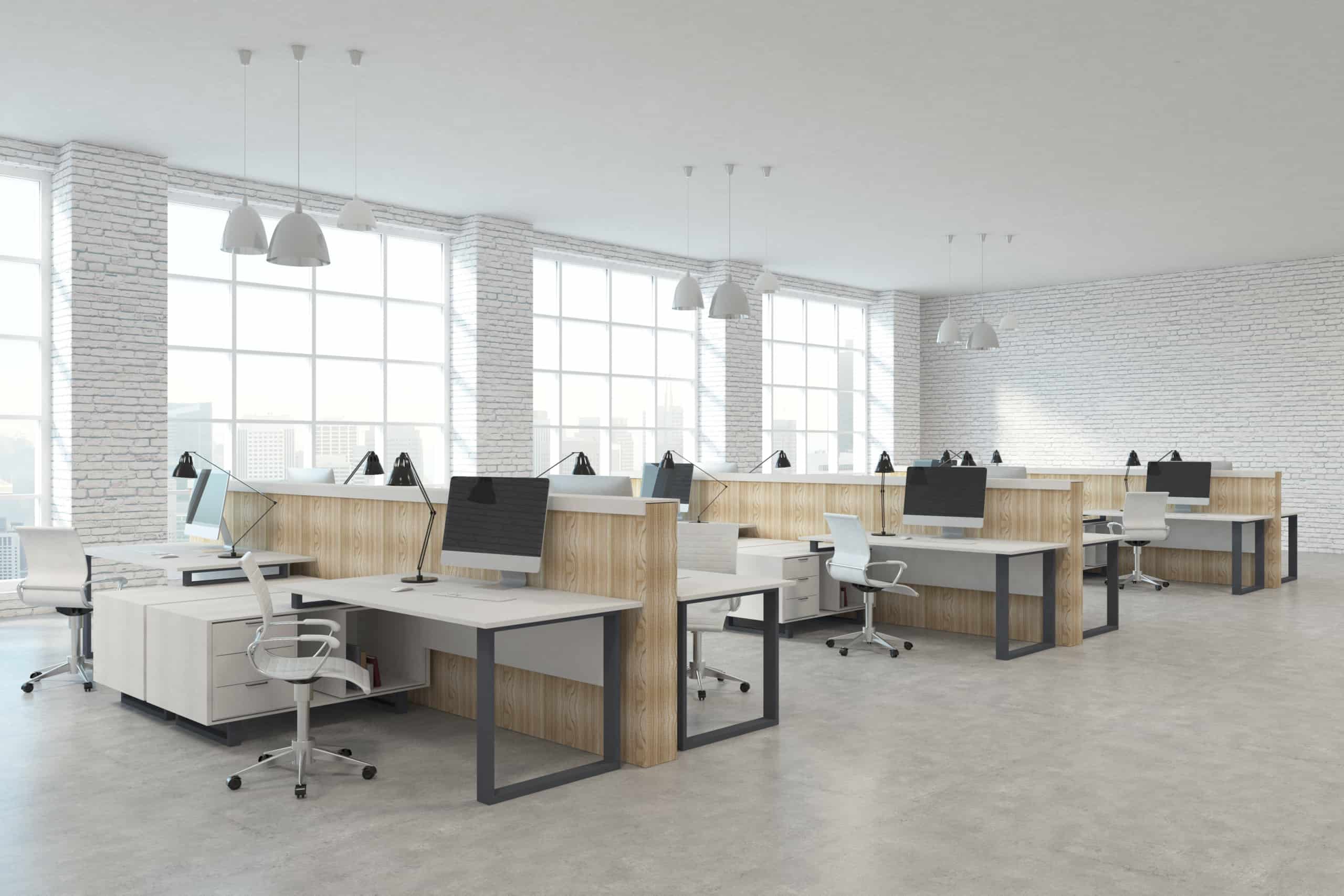
Alternative Meeting Spaces
An alternative meeting space in an office is a designated area or room that is different from the traditional conference or meeting room. It provides an alternative location for employees to hold meetings, collaborate, or work together in a more casual or creative setting.
Some examples of alternative meeting spaces in an office include:
- Lounge areas: These are comfortable seating areas where employees can gather for informal meetings or brainstorming sessions. They may be equipped with coffee tables, armchairs, and soft lighting to create a relaxed and inviting atmosphere.
- Breakout rooms: These are small meeting rooms that are designed for groups to work together in a more private setting. They may be equipped with whiteboards, projectors, or other tools to facilitate collaboration.
- Outdoor spaces: Outdoor spaces such as rooftops, balconies, or patios can provide a refreshing change of scenery for meetings and events. They may be outfitted with tables, chairs, or other seating options to create a functional and inviting workspace.
- Open spaces: Some offices have open spaces such as atriums or common areas that can be used for meetings or events. These spaces can provide a more dynamic and creative environment for brainstorming and collaboration.
Alternative meeting spaces in an office can help to promote creativity, collaboration, and productivity by providing employees with a change of scenery and a more relaxed and informal setting. They can also help to make meetings and events more engaging and enjoyable for participants, and provide a refreshing break from the routine of the traditional conference room.

Improving the Carbon Footprint
Office downsizing can potentially reduce the carbon footprint of a business. By decreasing the amount of office space that a business occupies, it can reduce its energy consumption and emissions associated with heating, cooling, lighting, and other office operations. This can also result in cost savings for the business.
Additionally, downsizing can encourage more sustainable work practices such as remote work, which can further reduce emissions from transportation and commuting. Remote work also reduces the need for office equipment, such as printers and copiers, which can result in lower energy consumption and emissions associated with their use and disposal.
However, it is important to note that the carbon footprint reduction from office downsizing may be offset by other factors such as the carbon emissions associated with the construction of a new office or the transportation of employees to alternative work locations. It is therefore important for businesses to carefully evaluate the environmental impacts of downsizing and consider a range of factors when making decisions about their office space.

